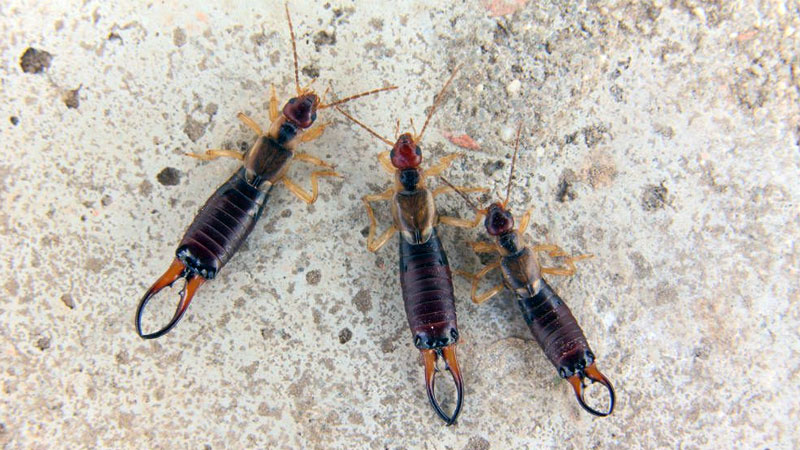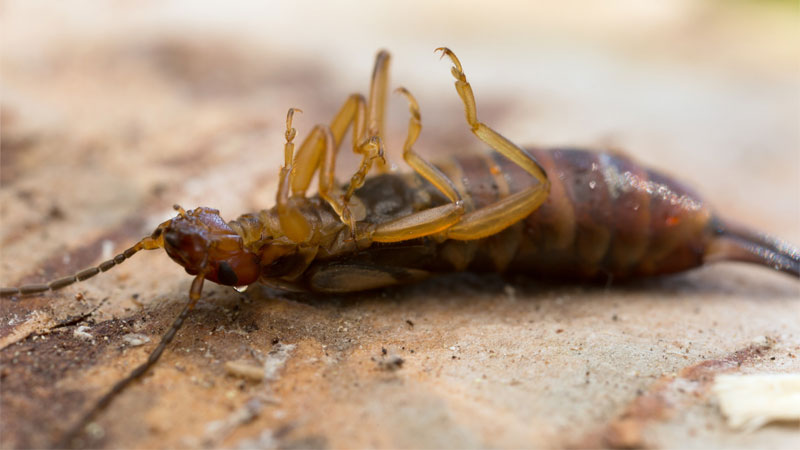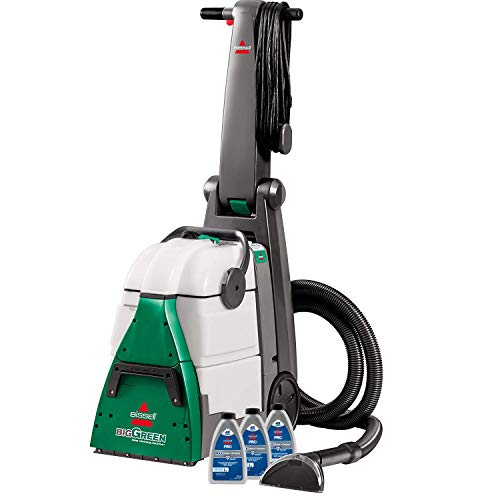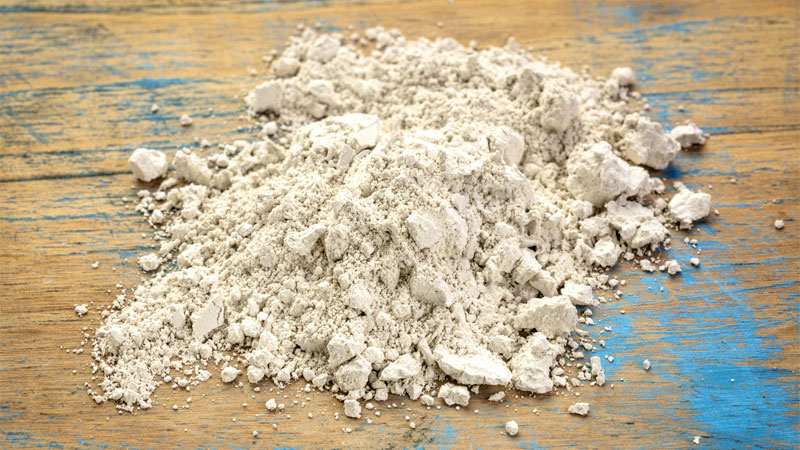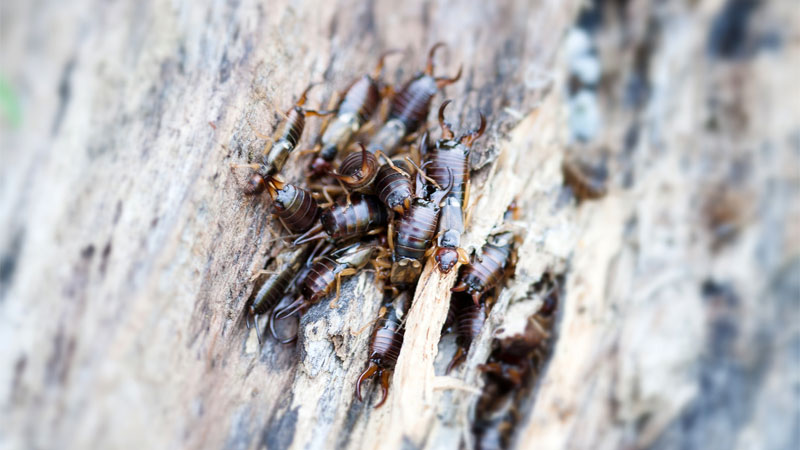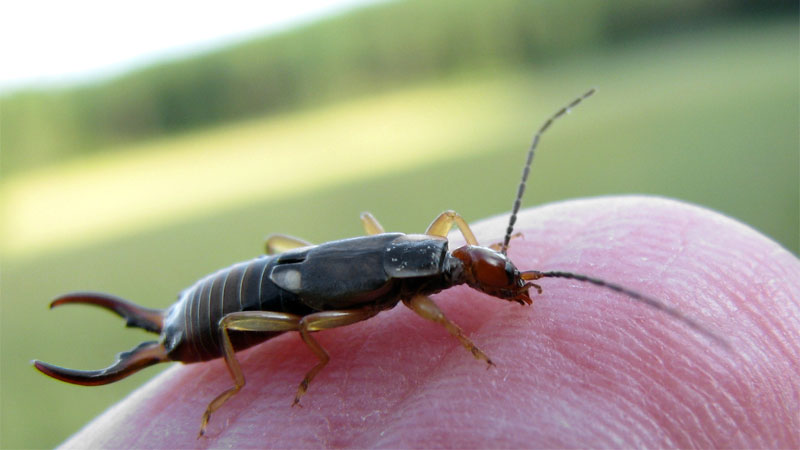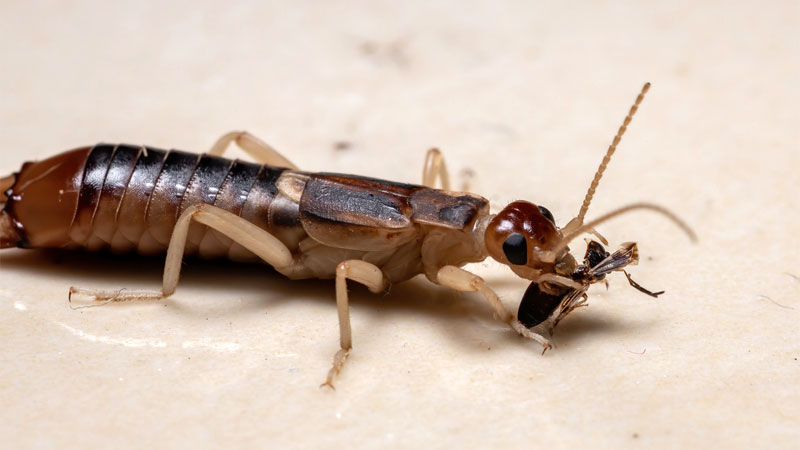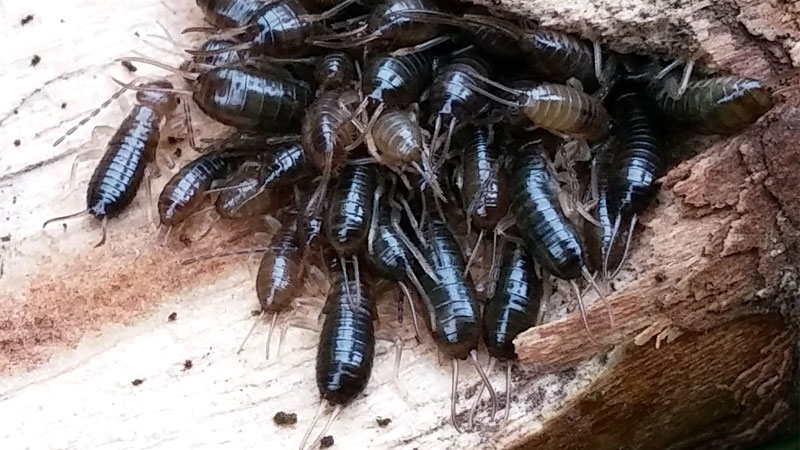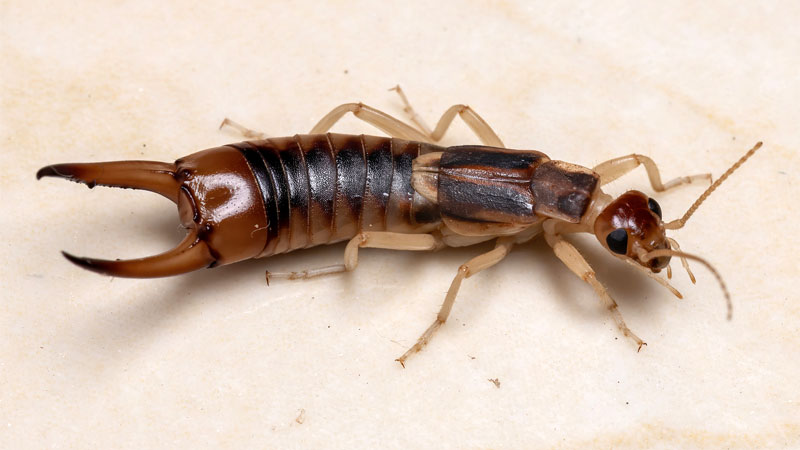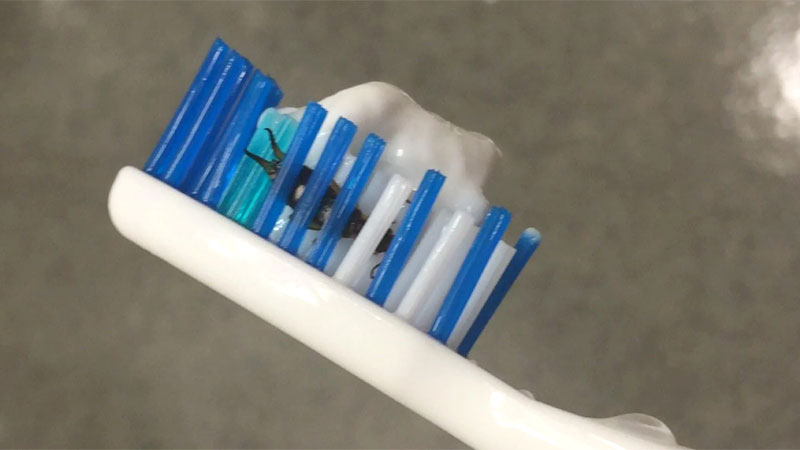They’re small yet iconic in their appearance to the point they were one of the critters featured in the popular Creepy Crawlers toy molding franchise. Yet these aren’t spiders or centipedes – they’re earwigs! While they prefer the great outdoors, they’re also known to invade homes.
Let’s look at how to get rid of earwigs (and also get to know more about them).
How to Get Rid of Earwigs in the House
So let’s say some earwigs have already made it inside. What now?
There are thankfully many simple (and often free) tactics you can use for getting rid of earwig infestations. These tricks will work on all earwig species and many other common household pests.
#1 – Clean House (Pun Intended)
Cleaning not only discourages earwigs, it also works for killing them off. A spray bottle of water with a few drops of Dawn dish soap makes for a great contact killer.
Just spray the soapy water when you see an earwig and it’ll suffocate it on contact. Just remember, this can take a minute or two. You can then follow up with a paper towel and get some cleaning done at the same time.
Likewise, the vacuum and steamer are your friends. Vacuuming will suck up earwigs, food particles, carpet beetles, and any other pests that happen to be hanging around your floors.
Or you can go the heavy duty route and use a steam vac or carpet cleaner. These not only vacuum, they inject hot water into the surface to loosen and suck up dirt and dust a regular vacuum can’t reach. Even better, the heat will kill most tiny critters the steamer sucks up, including earwigs, fleas, and even bed bugs!
- Every Purchase Saves Pets. BISSELL proudly supports BISSELL Pet Foundation and...
- Outcleans the Leading Rental. Get professional grade cleaning results, Power...
- XL DirtLifter PowerBrush. Eight rows of bristles penetrate carpet fibers to...
#2 – Dust Them to Death
Food-grade diatomaceous earth (DE for short) is an all-natural product that’s made from crushing the fossilized shells of microscopic diatoms. And while that description sounds like a mouthful, this simple remedy is one of the best out there for killing bugs and even getting some larger critters to avoid an area after stepping on it.
You’ll want to buy the food grade DE, as this is the best for use indoors. Sprinkle it where you suspect the earwigs are hiding. While it feels like soft dust to you and me, it feels like broken glass to tiny critters.
As the earwig crawls over it, the sharp edges will lacerate the waxy coating that covers a bug’s exoskeleton. Without this coating, the pest quickly loses moisture and will die of dehydration.
Although DE is safe for use around your child, cat, or dog, it’s still made of dust-like particles that can be inhaled. You will also need to reapply the diatomaceous earth every few days, as airflow can scatter it. Finally, if the DE is exposed to moist conditions, it will be rendered useless and needs to be reapplied.
You can perform the same tricks using boric acid instead of DE. Just keep in mind this alternative is actually toxic to children and pets, so it should be used with caution.
#3 – Light traps
Insects are a strange lot, especially those that tend to hide from the light. For example, moths seem attracted to flame and light bulbs, but they’re actually trying to get to the darkness behind these light sources.
Meanwhile, earwigs will scurry from light during the day but are attracted to it at night. You can use this to create a simply yet deadly light trap.
Get a small bucket and fill it with emulsified water (again, Dawn is a great option, although you can also use insecticidal soap). Position a light over it so the light is reflected in the water’s surface. Earwigs will try to approach the light and drown instead.
A word of warning with this one: While it technically works, there may be some strategic problems involved. For example, if the earwig doesn’t see the reflected light, it won’t try to approach. As a result, the bigger the bucket you use, the less likely it is to work.
Conversely, if you use something too shallow, such as a saucer, the earwig won’t actually fall in and could potentially escape.
#4 – Soy Trap
Now, we love soy sauce (and duck sauce, and teriyaki sauce…), but this next method really seems to have a cult following, especially online.
Mix equal parts soy sauce and oil (olive oil, canola, and vegetable oil all work equally well), then pour this mixture into a shallow container, such as a jar lid. Stick it where you’ve noticed earwig activity.
The earwig will be attracted by the smell of salty goodness that is soy sauce and get coated in oil. The oil will make it impossible for the earwig to escape and it will slowly suffocate as it gets coated.
How to Get Rid of Earwigs in the Garden
Even though we focused on indoor earwig activity, we don’t want to leave our gardening friends hanging.
Literally all of the methods we mentioned for indoor use can be used outside as well (with the possibly awkward exception of vacuuming), but we have three additional methods worth noting.
#1 – The Birds
While Alfred Hitchcock famously made a thriller about crazy birds killing people, our fine feathered friends can be pretty vicious in real life as well.
Many birds are either omnivores or insectivores, and having swallows, sparrows, or other small birds in your backyard can be one of the best natural remedies against earwigs. The moment they spot one, they’ll swoop down and snatch the tasty snack before the critter has a chance to flee.
So add a bird feeder, bird bath, or even a bat house to your yard. In return, you’ll have an almost passive (just refill the bird seed) earwig control system.
#2 – Pesticides
There are various insecticidal sprays and other products formulated to work against earwigs. We’ll only mention this one in passing, however, as it can kill beneficial insects just as easily as pests. But if you’d like to go that route, here are some proven options:
#2 – Neem Soil Soaks
Finally, we have to bring up the wonderful remedy that is neem oil. 100% cold-pressed pure neem oil is a natural extract from the neem tree (Azadirachta indica) and has more than five active insecticidal chemical compounds.
As a soil soak, it’s safe around earthworms, beneficial insects and you can harvest produce a day after treatment.
- Simply make an emulsion using one teaspoon of Dawn dish soap or pure castile soap mixed into either a quart or gallon of water (either works).
- Next, mix one teaspoon of the neem oil per quart or TWO tablespoons per gallon (yes, it’s rounded up).
- Pour two or three cups around the base of each plant, being sure not to get any on the plant itself.
Once absorbed by the roots, the neem becomes a systemic insecticide that lasts up to 22 days and will sterilize and slowly kill any pest that pierces or chews on the plant. It will also help fight root rot and some bacterial and fungal infections! Reapply every three weeks as a preventative.
Getting to Know Earwigs
Steeped in myths and surprisingly common in literature under a variety of nicknames, earwigs can be both friend and foe to gardeners everywhere. However, they’re are a lot scarier looking than they are dangerous, and it’s important to know why you may want to avoid killing earwigs when they’re outside. Here’s the basic lowdown on these little creepers.
What Are Earwigs, Anyway?
Earwigs are an entire order of insects called Dermaptera. There are 2,000 individual species across 12 families. However, you’re most likely to run into the European earwig (Forficula auricularia). While we’ll be focusing more on this species, most types of earwigs are very similar.
These earwigs are reddish-brown and elongated, with a trademark set of pincers at the rear. These pincers, known as cerci, are curved in males and straight in females. Oddly enough, if one side of the cerci breaks off, it will regrow straight, even in males.
Do Earwigs Bite or Pinch?
It’s extremely rare for an earwig to do either. Pinching is a bit more common than biting, but neither are harmful and aren’t known to cause any ill effects other than a bit of brief redness.
What Do They Do With Those Pincers?
The pincers, while menacing in appearance, are used to grasp prey. Beyond grasping, the cerci are also used for self defense and when mating. They’re not harmful and contain no venom.
At most, getting pinched by an earwig may leave two tiny red marks that soon fade and you might not even notice them pinching you!
Do Earwigs Go In Your Ear?
While this is the first association most people make when they hear the word “earwig”, you can rest easy.
Unlike Yeerks or Ceti eels, earwigs don’t actually crawl into your ear (cases of them even attempting to are so rare as to not be worth mentioning), nor can they eat your brain or control you. In fact, the name actually refers to the ear-like shape the beetle’s hindwings have when they’re unfolded.
The old wives’ tale that earwigs burrow into people’s ears was likely based in part on forgetting the original meaning of the name (which is based on the Old English “ēare wicga” – literally “ear beetle”). And, since a fear of insects or arachnids crawling into your ears, nose, etc. is a common phobia linked with entomophobia and arachnophobia, this myth has persisted in popular culture.
Your ear wax is literally there to repel bugs of all sorts from intruding into the ear canal, and it’s pretty rare for anything to actually get in, let alone a larger insect such as earwigs
Are Earwigs Dangerous?
Earwigs are not considered dangerous to humans or pets. They’re non-venomous, aren’t known to be disease vectors, and aren’t known to cause allergic reactions.
However, their food sources can carry disease, so food contamination is a distinct possibility.
What Do Earwigs Eat?
While it varies a bit from one species to another, the European earwig’s diet is a good example of what most earwigs eat. This species is omnivorous and hunts arthropods and insects. They’ll also scavenge decaying organic matter and bug corpses.
However, they’re also known to feed on living plants and fruit.
Earwigs vs Agriculture
This brings us to a big debate: Are earwigs beneficial or a pest?
There’s no denying they help keep plant pests under control, including aphids, mealybugs, and spider mites. They also help break down dead plant matter and dead insects, which in turn can help enrich the soil.
On the other side of the coin, they’re known to chew through berries and other fruit, some vegetables, and occasionally living leaves. The damage to produce can be costly for farms and other agricultural businesses, although damage to leaves and stems tends to be very minor.
Where Do Earwigs Hide?
Earwigs show a lot of common habits with centipedes, millipedes, and pill bugs. They’re primarily nocturnal and will hide in cool, dark, and damp places. This includes hiding under mulch, rocks, thick vegetation, wood piles, or yard debris.
Foundations can also be a source of shelter, especially if there are cracks or crevasses present. You can also find them near sources of moisture, such as AC units or hose faucets. In fact, they’re known in Japan for hanging around old toilets, earning them the macabre nickname of “penis cutters” (they don’t actually do this, mind you).
Earwigs vs Silverfish vs Termites
While these three pests are very different, they have some similarities in behavior and size that can cause confusion if you don’t get a good look. Here are some of the key features to look for:
Earwigs have a two-pronged pincer (cerci) at the back and are elongated ovals in shape. They tend to be reddish-brown and often have two sets of wings.
Silverfish are from the Order Thysanura and look like elongated silver teardrops. They have three hair-like appendages splayed out behind them and commonly contaminate human food stores. Unlike termites and earwigs, all types of silverfish are completely wingless.
Meanwhile, termites look a lot like ants and feed on the cellulose in wood. Only the queens and alates have wings, which are used in the mating flight.
Of the three, termites create the highest risk of structural damage, silverfish the biggest contamination risk, and earwigs are a sign you have other problems in your home.
Related: 11 Bugs That Look Like Earwigs
Why Are There Earwigs in My House?
Unlike relatives, earwigs tend to be transitional houseguests. They’d much rather be outside hunting, but occasionally they’re driven indoors or accidentally wander into your home or apartment. Here are a few of the common reasons you’ll find them indoors and what you can do about it.
Common Causes of Earwigs in the House
Food
Earwigs are scavenges, but many of the most common species are also hunters. They can often make their way in through entry points while searching for food and sometimes stick around if there’s an existing infestation.
Moisture and Heat
Sometimes, it can get a little too dry outside and even the soil under rocks will lose its moisture. At other times, it can get too wet after a heavy rain. In both cases, the earwigs will attempt to find a more suitable shelter.
The same can be said of excessive heat. Earwigs like cool, dark locations, so heat waves will often drive them towards cooler hiding spots. This can include your home if there are entry points.
Stowaways
Another common reason earwigs might end up in your home is from accidentally bringing them in yourself. They might have taken shelter in the crevasses of objects you’d left outside or were hiding in flower pots.
If you store firewood inside the house, there’s a good chance earwigs hitched a ride that way. Sometimes, they might even have ended up on your clothing when you brushed up against plants at night.
Common Household Hiding Spots
Dark, cool, moist, and with available sources of food – these are the four things an earwig will look for when it wanders inside. This means the kitchen, bathroom, and basement are prime hiding spots. However, they can also take shelter under rugs or furniture.
The chances of them sticking around are increased if you have other infestations or there are a lot of food crumbs about. Earwigs don’t particularly care for human food, but plant-based foods such as cereal, bread, or produce debris can encourage them to stick around once more palatable food sources are gone.
Keeping Earwigs Out
Obviously, the fact that earwigs might use your home as a motel until the weather passes doesn’t mean you want them there in the first place. But the good news is that exclusionary tactics can be a big help.
If you frequent this site, you’ll already know these tricks, but for those who aren’t familiar with exclusion, here are the basics:
Make sure all doors and windows are properly caulked and any screens that have holes (besides the intended ones) are replaced.
Caulk around any places where pipes or wires enter the house.
Patch up any damage to your foundation both inside and out and seal any cracks in the outer walls.
Create a 6″ inch dead zone around your foundation where there’s no vegetation and a perimeter insecticide such as Ortho Home Defense.
Add mesh screens to vents, soffits, and other potential entry points where airflow is needed.
Keep your home clean, vacuuming and dusting at least weekly and addressing any infestations the moment you spot them.
- How to Get Rid of Hawks - March 8, 2024
- How to Get Rid of Pill Bugs (Rolly Pollies) - March 1, 2024
- How to Get Rid of Groundhogs (Woodchucks) - February 5, 2024

